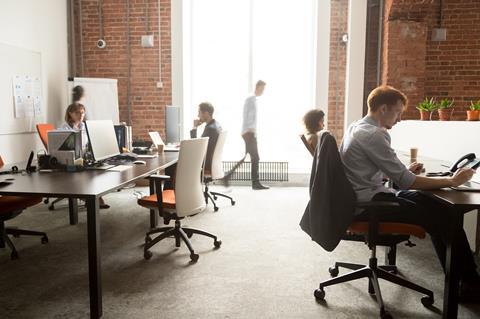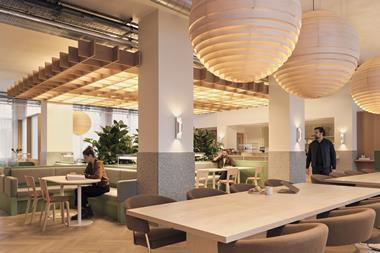The past year has put the spotlight on how and where we work, accelerating trends that are likely to drive lasting change in our workplaces. While the pandemic has undoubtedly heightened businesses’ emphasis on employee health and wellbeing, productivity will also be among the crucial factors supporting economic recovery.

The key to driving productivity in the knowledge economy is understanding what makes people happy and ambitious to perform at their best.
Avison Young’s recent report ‘Productivity, the workplace and Covid-19’ explores the importance of a high-quality work environment in maintaining an engaged and motivated workforce. With widespread Covid-enforced homeworking, we have had a unique opportunity to investigate how different environments we work in affect productivity, and what lessons can be drawn from this.
Our research was constructed around an adaptation of Maslow’s ‘hierarchy of needs’. This psychological theory proposes that all human behaviour is driven by a range of needs, from fundamental physiological needs to the feeling of accomplishment and self-actualisation, and that individuals become more engaged in working towards higher-level achievements as these needs are met.
‘Higher-tier’ needs
As businesses begin to move past the initial emergency response we saw last year, the focus is shifting from ensuring employees’ ‘lower-tier’ needs – such as a desk and a stable internet connection – are met, to searching for ways to meet their ‘higher-tier’ needs, which will in turn foster strategic, creative thinking needed for growth and business development.
Although the economic fallout of the pandemic will lead to some companies downsizing or closing their offices entirely, for many organisations the office remains an important social space in which to foster a collective company culture and sense of belonging. A well-designed workspace can connect people through a shared experience, helping to build a strong and connected work community, as well as providing a backdrop for informal learning and development of skills.

However, while offices undoubtedly enable social exchange and collaborative working in ways remote working cannot, many employees favour home environments for individual, focused work, such as reading or thinking creatively.
How can an office environment offer the best of both worlds? Companies must consider how they can reconfigure their office space to make it work for their employees. It is vital to understand the specific needs of employees and what motivates them – this will not be a one-size-fits-all solution.
Our organisations are made up of unique individuals, who need different things to perform at their best. The better a particular environment facilitates a degree of personalisation, the more comfortable and productive people will be. Offices should be designed based on the people who inhabit them; they should be well-thought-out and provisioned for the activities that happen within them.
While a full-scale office revamp may sound exciting and look impressive, smaller, targeted interventions can be just as effective. This requires close collaboration and feedback loops with employees to understand how they are working and why, instead of prescribing untested new layouts.
Office spaces will still serve a crucial purpose as active work hubs in a post-Covid world. However, businesses will need an agile strategy in place in order to provide offices that meet the varied, evolving needs and desires of their employees.
Anna Scally is director of workplace, arts and culture at Avison Young






























No comments yet